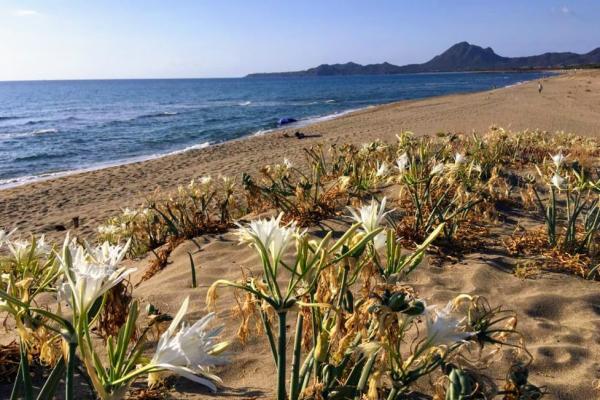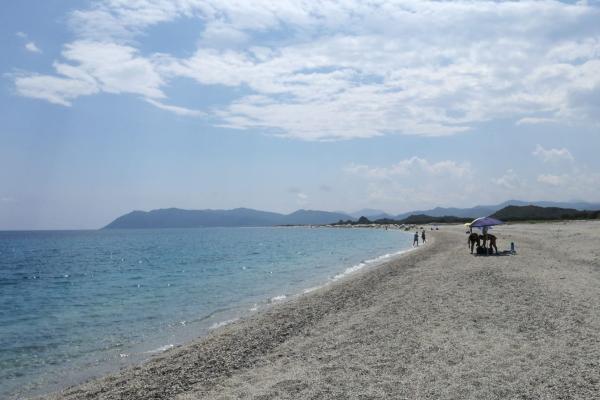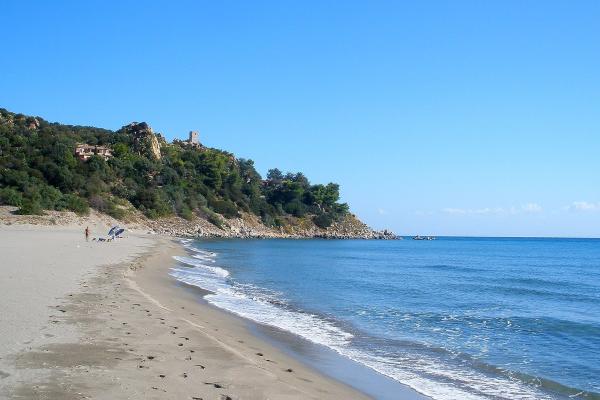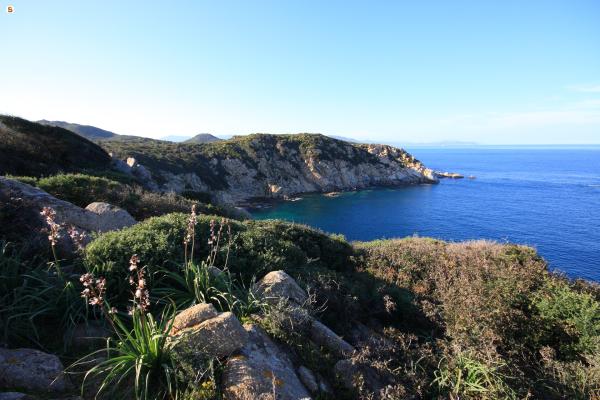The island preserves an infinity of lake ecosystems, a unique and priceless heritage. One of the most striking 'wetlands', among the largest in terms of size and importance, is the Sarrabus lagoon complex, a historical region on the south-eastern coast. It is composed of about ten ponds of various sizes, each with specific natural features and levels of biodiversity. Their placid waters unfold close to beaches of fine and soft sand, along the 'old' east Sardinian road (state road 125) in the territories of Muravera and Villaputzu, towns lying in the plain formed by the mouth of the Flumendosa. To the north of the river, up to Quirra, you can visit the ponds of Villaputzu; to the south are the 1500 hectares of Muraverese lagoons surrounded by sandy dunes covered by a pine forest.
Near the mouth of the river, connected to a quartz beach and the sea by a canal, is the Pool of San Giovanni, inhabited by coots, moorhens, mallards and little grebes. In its waters the fishermen breed mussels, clams, oysters, bream and bass. Next, you come to the Le Saline pool, a natural salt pan overlooked by the Spanish tower of the same name, where salt was once collected. At dawn it lights up in shades of red, and the rest of the day the atmosphere is coloured with Mediterranean green and pink thanks to the colonies of flamingos that populate it in the hot months. In the plain of San Priamo, you can see the most impressive spectacle: behind the isolated and beautiful beaches of bronze-coloured sand, coloured by sea lilies and yellow poppies, lie the pools of Colostrai and Feraxi. Linked together, they form a wildlife protection reserve populated by herons, ducks, black-winged stilts, marsh hawks, egrets, kingfishers, swamphens, rare avocets and the ever present, majestic pink flamingos that nest here. You can also spot occasional white storks and oystercatchers. In the paths along the banks, to be covered on foot, by bike or on horseback, you can stop in scenic spots for photo shoots or birdwatching, especially at sunset, in the magic of relaxing colours and soft sounds. Further south, behind the magnificent coast of Costa Rei - the longest sandy stretch of eastern Sardinia (ten kilometres) - in dry periods you can explore, even barefoot, the small pond of Piscina Rei, looking for colourful shells.
In the territory of Villaputzu, in the vast alluvial valleys crossed by the Flumendosa and Rio Quirra, stagnant ecosystems of considerable environmental and naturalistic value have been created: sa Praia, Pardu Mareus, Murtas and s'Acqua (or Flumini) durci. Close to magnificent beaches - including Porto Coralloid and Murtas - are ideal spots for long walks and birdwatching, home, in the thick reeds, to the same waterfowl of Colostrai and Feraxi and others as Scopoli's shearwaters, shags, partridges and bitterns, as well as turtles and rare amphibians. Around the ponds, you can combine nature excursions with archaeological explorations among megalithic complexes, menhirs, domus de Janas, various types of nuraghe, Giants' tombs, sacred wells, Punic, Roman, and medieval ruins and former mining sites.
Muravera and Villaputzu admirably combine natural attractions, history and culture, traditions and gastronomic delicacies. The fertile valley of the Flumendosa is punctuated by citrus 'gardens', protagonists of the citrus festival, the event of the year in Muravera. The appointment par excellence at Villaputzu is the festival of launeddas, an ancestral wind instrument.
















